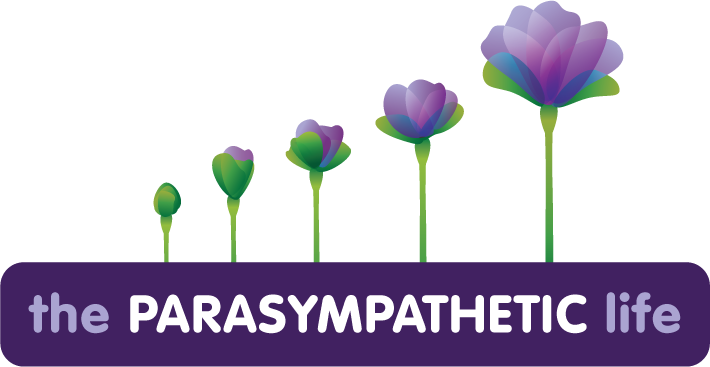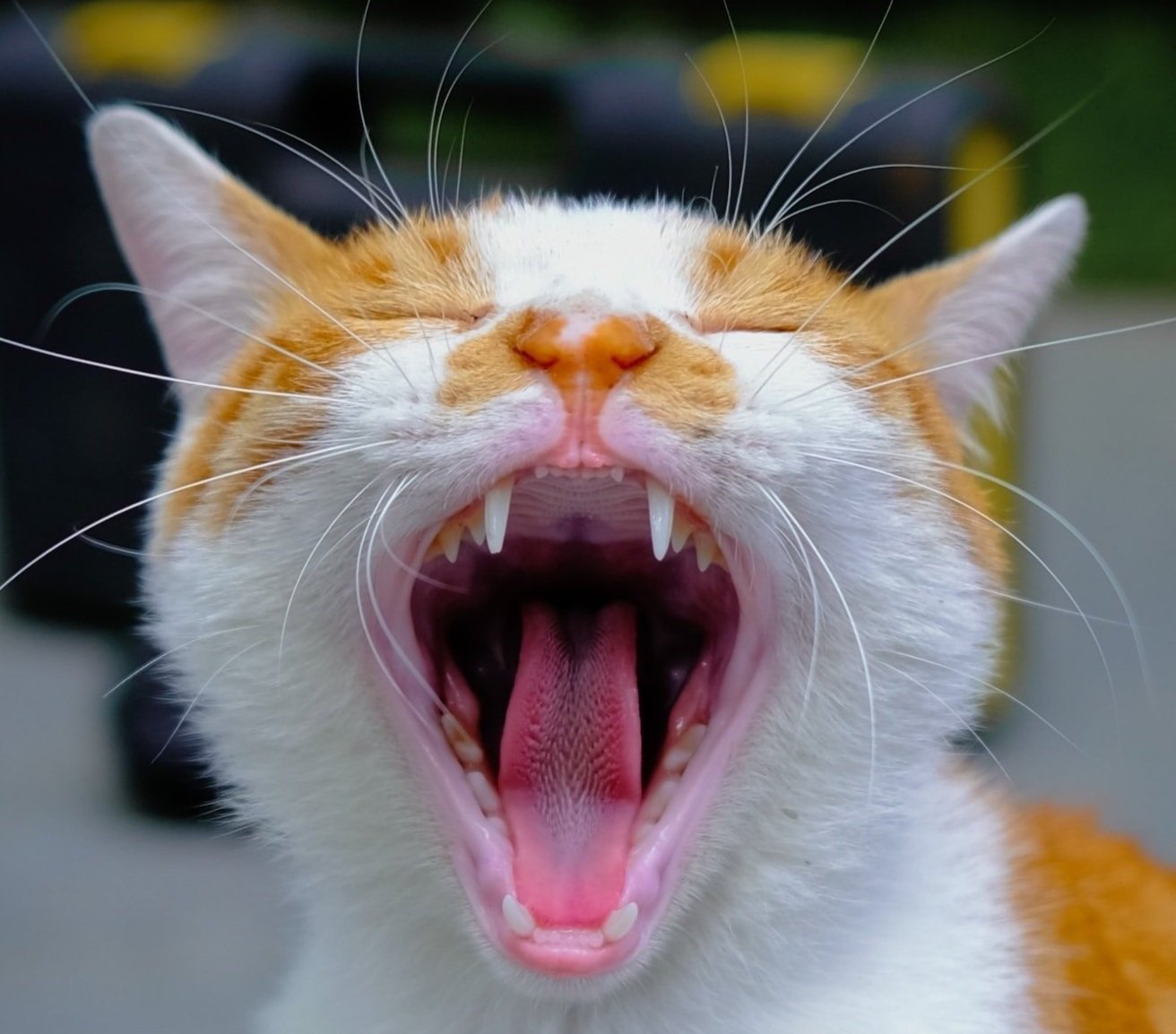TongueSegrity
The orange is a simple representation of our fascial system.
The “body” is surrounded by a whitish “skin” that continues throughout the orange to create bag-like spaces that house the juicy “flesh” akin to our organs, vessels, muscles and cells.
Tensegrity = tensional + integrity
Tensengrity + tongue = TongueSegrity
TongueSegrity is my concept of a tongue that maintains its tone and appropriate position in the oral cavity while moving in relationship to every other bodily structure (without needing to consciously train or control it).
Using the conscious mind to train the tongue does not lead to Tonguesegrity. Instead, controlling tongue position creates more “shoulds” you need to remember to do in order to manage your body.
There cannot be one ideal tongue posture if the tongue is to participate in the tensegrity structure of the whole body. When one body part moves, everything else also needs to move in order to stay in holistic biomechanical relationship.
Manual Therapists like myself are trained in the concept of tensegrity because the continuity of our connective tissue or myofascial layers is how strains in tissues can be transmitted through the body from one area to another. The dynamic support of these layers forms a network of interconnecting fascial bags (simplified in the segments of the orange) that contains our organs, muscles, coverings around our vessels and nerves, and even provides structural support at the cellular level. Each cell is a tensegrity structure, each joint is a tensegrity structure, and all of these components interweave and interact making the body as a whole a tensegrity structure.
The orange does not strive to maintain the support of its fibrous sheaths that create its segments. Tensegrity is nature’s design of balanced tension in all life forms which is why researchers of this subject have evolved the word into biotensegrity (from the book of the same title).
Noone needs to tell the giraffe to stand up straight. In whatever position it finds itself, it has biotensegrity. The structure maintains tone and volume without collapsing into gravity by design, and our structure is the same. Biotensegrity is always present for us, but to varying degrees. What we think and how we move can influence the efficiency of this dynamic system and, therefore, the health of our bodies.
In much of my manual therapy training, the supportive function of our fascial system has been neglected. As practitioners, we are constantly mobilizing areas of restricted tissues, but facilitating fascial release does not create appropriate tension of the connective tissue system. And if we focus on releasing the fascia of the tongue and oral cavity through manual therapy or surgery, we make it more difficult for the tongue to maintain its tone in all relationships to gravity and in balance with its surrounding structures.
Try this Holistic Biomechanics™ practice. First, notice where the tip of your tongue is and if any of the top of your tongue is touching the roof of your mouth. Allow your tongue to be as it is without repositioning it. Then observe two points for 90 seconds: the first point is your tongue tendon on the underside of your tongue; the second is the roof of your mouth behind your upper front teeth. Don’t worry about being too exact, simply casually observe the two points and see what happens for 90 seconds.
Did you notice any changes in your tongue position that happened on their own? Did you notice changes elsewhere, or a change in your breathing pattern? Welcome to the magic of your unconscious brain managing the position and tone of your tongue in relationship to the rest of your body, as well as the physiology of all your bodily systems.
If you didn’t notice anything, it might take a little more time, or you may need some guidance on noticing location rather than sensations. Perhaps there are some “shoulds” you have about your tongue, your nervous system, your breath, or how you are supposed to feel or sit that got in the way of noticing the structural changes that came from within. You get to observe those ideas and make the choice to return your attention to the location of the two points.
I would love to hear from you if you have comments or questions about this exploration and cultivating Tonguesegrity.
This yawning cat’s tongue displays the tone that comes with tensegrity. Rather than being flaccid, it maintains it’s integrity.
Still curious? The following is for the frenectomy-informed:
You might be wondering who I am to have opinions about this topic. I was a professional singer who became certified in CranioSacral Therapy, a practitioner of Body-Mind Centering, a Somatic Movement Therapist, and an Infant Developmental Movement Educator (you can see my bio here for a complete list). After much research and deliberation, I had a lingual frenectomy in my 30’s to release my tongue tie.
My experience at the time was that the procedure freed my singing voice and other structures that had felt tight or blocked. Soon after the frenectomy, I committed to my Manual Therapy practice, stopped performing and then became a mother. Over time, I suspected that my tongue was reattaching to the oral floor, but without the regular singing practice, I wasn’t strongly affected by the thickening of this tendon (although slow changes over time can evade our awareness).
The surgeon who released my infant’s tongue examined mine and suggested I have my tongue redone. I finally did so when my son was older and I had the resources to handle whatever might show up post-operatively. Again, huge changes in my structure occurred, and at the time, I perceived them positively. I felt looser, more open, more relaxed, and pleased with my increased mobility in advanced yoga postures. I was already an advocate for this procedure, helping people pre and post surgery with CranioSacral Therapy, Visceral Manipulation and Body-Mind Centering practices to adapt to their newly mobile tissues and shifting cranial structure, but I became even more convinced of its benefits after my experience. With a released tongue, a new issue arose, however. My narrow palate and unfortunate tooth extractions as a teenager due to dental crowding caused me to have a tongue that was too big for my mouth. I did some work with a myofunctional therapist, got some referrals for dentists and orthodontists, and began researching devices to expand my palate.
Five months after my 2nd frenectomy was when I had the diagonal whiplash/concussion injury that caused my tongue, neck, throat, respiratory system, and much of the rest of me to become very torqued and tense. I was dismayed by this timing because right before this car event, I was shadowing the surgeon who performed my second frenectomy so I could be secure in my evaluations with clients. When he finished for the day, we agreed he should laser away the small part of my frenulum that had reattached. So, I had just had my tongue revised again, only to find myself (to quote one healer I saw for the discomfort and twisting pattern), with fascia that was “completely whacked out”. I really didn’t want to have another frenectomy, and couldn’t handle one anyway with my whiplash recovery not progressing in the way I expected, so I ignored my thickening and tight tongue tendon, put off getting an expensive palate expander, and continued to see practitioners in search of healing from the whiplash.
After starting to get relief from all aspects of the injury from only a short time of FMHB™, I realized I didn’t need anything done to my tongue (or any other part of my body) surgically, manually or energetically. My own body was able to begin to balance all lingual and associated tissues without any intervention except practicing Two Points of Awareness and doing FMHB™ movement classes. I saw the power of the Parasympathetic Nervous System as I developed stabilizing tensegrity in my body for the first time in all my years as a movement professional, and developed more stable tensegrity in my tongue and oral cavity. Because this tonification happened without any intervention, I now believe that our approach to Tethered Oral Tissues Syndrome is misguided in most cases. I guess you could say I’ve changed my tune!
If we are in Fight or Flight, the hyoid and tubes of the throat (pharynx, trachea, esophagus) reflexively pull towards the back of the neck and the mandible retracts, pulling the frenulum along with it. These involuntary structural changes along with tucking our tails and ducking our heads happen simultaneously with the physiological changes of releasing adrenaline, and increased respiration when we shift into our Sympathetic Nervous System. The unconscious brain will reverse these reflexes if we are mapping our body location which allows our limbic system to orient us in our current environment. When the reflexes are no longer active, the frenulum, hyoid and mandible all begin moving forward and eliminating the tension that thickens the tendon and restricts the tongue’s movement.
Fascial release can cause the tongue to lose tone and fall into the back of the throat, which can cause snoring and apnea, which can cause the need for a palate expander and tongue exercises to train the tongue to stay in proper resting position. Since our tongue position (and mandible, and hyoid and every other structure) will change depending on how our Nervous System is perceiving our reality, and then move with every movement we make, there can be no single proper resting position. Our unconscious brain is designed to and will efficiently manage all the bodily systems that need to be functioning in order for tonguesegrity to emerge organically, provided we are predominantly Parasympathetic (which will happen by doing the practice of observing location). If you are contemplating having a frenulectomy, please consider contacting me for a session and see the potential of your Parasympathetic physiology.



